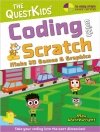This book systematically discusses the basic concepts, theories, research and latest trends in image fusion. It focuses on three image fusion categories – pixel, feature and decision – presenting various applications, such as medical imaging, remote sensing, night vision, robotics and autonomous vehicles. Further, it introduces readers to a new category: edge-preserving-based image fusion, and provides an overview of image fusion based on machine learning and deep learning. As such, it is a valuable resource for graduate students and scientists in the field of digital image processing and information fusion.
Table of Content
Preface.- Author introduction.- Acknowledgement.- Part I: Image Fusion Theories.- Chapter 1: Introduction to Image Fusion.- Chapter 2: Pixel-level Image Fusion.- Chapter 3: Feature-level Image Fusion.- Chapter 4: Decision-level Image Fusion.- Chapter 5: Multi-sensor Dynamic Image Fusion.- Chapter 6: Objective Fusion Metrics.- Chapter 7: Image Fusion Based on Machine Learning and Deep Learning.- Part II: Experimental Examples.- Chapter 8: Example 1: Medical Image Fusion.- Chapter 9: Example 2: Night Vision image Fusion.- Chapter 10: Simulation Platform of Image Fusion.
About the author
Gang Xiao received his bachelor’s, master’s and Ph. D degrees in 1998, 2001 and 2005 respectively. He is currently a Full Professor at the School of Aeronautics and Astronautics and the Director of the Advanced Avionics and Intelligent Information (AAII) Laboratory, Shanghai Jiao Tong University. He is senior member of the Chinese Aviation Society, member of Chinese Association of Automation and a member of the editorial board of the Information Fusion Journal. He was a visiting scholar at the University of California, San Diego (UCSD) in 2010 and Southern Illinois University Edwardsville (SIUE) in 2014. His current research interests include image fusion, target tracking and avionics integration.
Durga Prasad Bavirisetti received both M. Tech and Ph.D. degrees from the VIT University, India, in 2012 and 2016 respectively. Currently, he is pursuing post-doctoral studies at the School of Aeronautics and Astronautics, Shanghai Jiao Tong University, China, and is a member of the Advanced Avionics and Intelligent Information (AAII) Laboratory. He has published his research on image fusion in several leading journals and conferences. Dr. Durga Prasad serves as a reviewer for Information Fusion, IEEE Transactions on Multimedia, IEEE Transactions on Instrumentation and Measurement, IEEE Sensors, Infrared Physics and Technology, Neurocomputing, and the International Journal of Imaging Systems & Technology. His research interests focus on image fusion, target detection and tracking.
Gang Liu is a Full Professor at the School of Automation Engineering, Shanghai University of Electrical Power. He received his Ph D degree from Shanghai Jiao Tong University in 2005. His research interests include image fusion, pattern recognition and machine learning.
Xingchen Zhang received his B.Sc. degree from the Huazhong University of Science and Technology in 2012, and his Ph.D. degree from the Queen Mary University of London in 2017. He is currently a Postdoctoral Research Fellow at the School of Aeronautics and Astronautics, Shanghai Jiao Tong University, China. He is a member of the Advanced Avionics and Intelligent Information (AAII) Laboratory. His current research interests include object fusion tracking, image fusion, deep learning, and computer vision.












